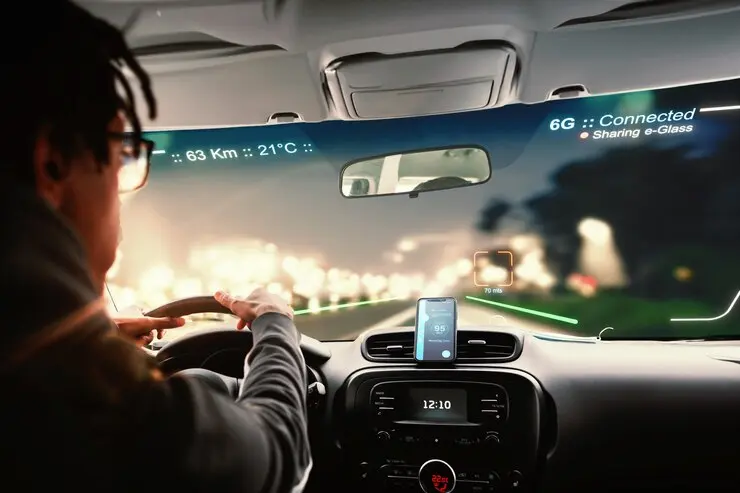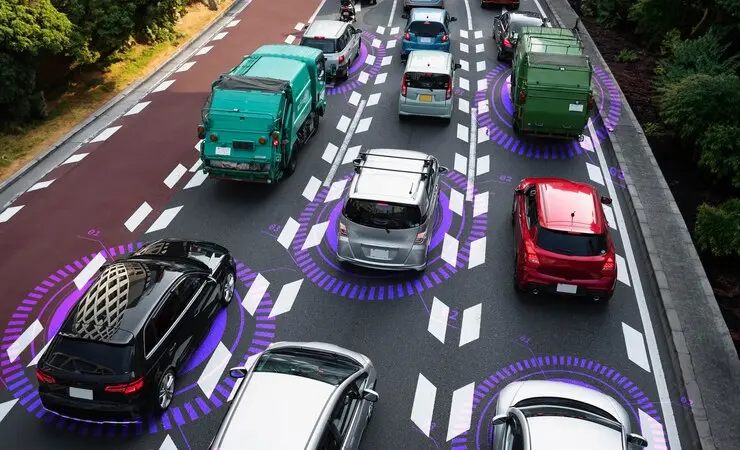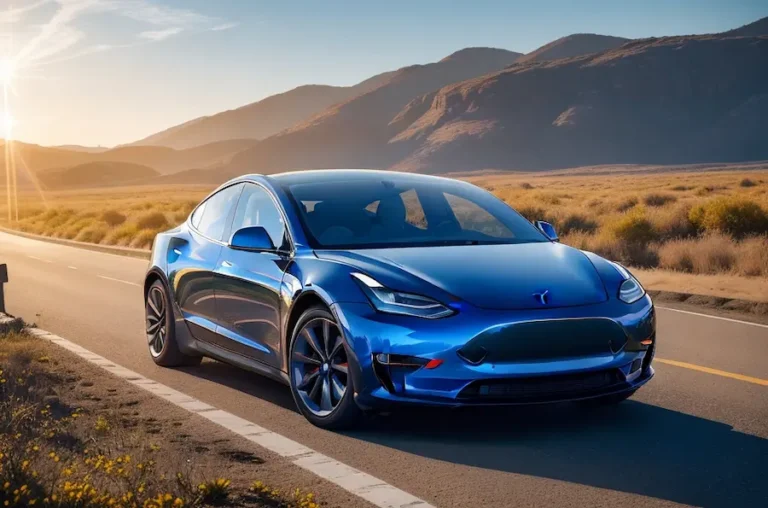Section 2: Current State of BMW’s Autonomous Driving Tech
As we venture further into the 21st century, BMW continues to push the envelope in the realm of autonomous driving technology. The current lineup of BMW models showcases a range of features that not only enhance the safety and driving experience but also pave the way for a future where cars can drive themselves. Let’s explore some of the latest autonomous features available in BMW models and how they contribute to the overall driving experience:
BMW’s Latest Autonomous Driving Features:
- Automated Parking Systems: Models like the BMW 7 Series and BMW iX offer advanced parking assistance systems. These systems can autonomously navigate into tight parking spaces, making urban driving more convenient.
- Adaptive Cruise Control with Stop & Go: This feature maintains a set speed while automatically adjusting to the flow of traffic, providing a more relaxed driving experience, especially on highways.
- Lane Keeping Assist with Side Collision Avoidance: This system helps keep the vehicle centered in its lane and can intervene with steering corrections to avoid potential side collisions.
- Traffic Jam Assistant: Available in models like the BMW X5, this feature takes over in heavy traffic situations, controlling speed, steering, and braking.
To provide a clear comparison of how these features are integrated across different models, here’s a table outlining their availability:
| BMW Model |
Automated Parking |
Adaptive Cruise Control |
Lane Keeping Assist |
Traffic Jam Assistant |
| BMW 7 Series |
Yes |
Yes |
Yes |
Yes |
| BMW iX |
Yes |
Yes |
Yes |
Yes |
| BMW X5 |
No |
Yes |
Yes |
Yes |
| BMW 3 Series |
No |
Yes |
Yes |
No |
These features represent a significant leap forward in autonomous driving technology, enhancing both safety and the overall driving experience. BMW’s approach ensures that these technologies complement the driver rather than replace them, maintaining the essence of what it means to drive a BMW.
Section 3: BMW’s Unique Approach to Autonomous Driving
In the realm of autonomous driving, many manufacturers focus solely on the technology, often overlooking the human element of driving. BMW, however, takes a distinctive approach. Their philosophy centers on a crucial balance: embracing the advancements of automation while retaining the engagement and pleasure of driving. This approach is pivotal in understanding how BMW is reshaping its identity as the “Ultimate Driving Machine” in the era of self-driving cars.
Emphasizing the Driver-Machine Connection
BMW’s vision of autonomous driving is not about relegating the driver to a passive role; rather, it’s about augmenting the driving experience. The goal is to offer a choice – the joy of driving when it’s wanted and the convenience of automation when it’s needed. This philosophy is evident in how BMW integrates autonomous technologies:
- Selective Autonomy: BMW vehicles offer varying levels of autonomy. Drivers can choose to engage these features, like assisted parking or highway driving assistance, while retaining full control over the driving experience.
- Driver-Centric Technology: The technology in BMW’s autonomous suite is designed to enhance the driver’s capabilities, not replace them. Features like lane-keeping assist or adaptive cruise control are tuned to provide support without detracting from the driving experience.
- Intuitive User Interface: BMW’s iDrive system, a hallmark of their in-car technology, continues to evolve. It offers an intuitive interface that seamlessly integrates autonomous features, making them accessible but not intrusive.
Preserving the BMW Identity
In the autonomous era, BMW faces the challenge of adapting to new technologies without losing its core identity – that of a brand synonymous with driving pleasure. Here’s how they’re navigating this path:
- Balancing Tradition with Innovation: BMW respects its heritage of performance and luxury while embracing the future. This balance is seen in their vehicle designs, which marry classic aesthetics with futuristic elements.
- Customizable Driving Experiences: Recognizing that different drivers have different needs, BMW’s autonomous systems are designed to be customizable. Whether it’s a spirited drive on a backcountry road or a relaxed commute in traffic, BMW aims to provide an appropriate setting for every scenario.
BMW’s approach to autonomous driving is a thoughtful blend of innovation, tradition, and respect for the driver. By doing so, they are not just preparing for the future; they are actively shaping it, ensuring that even in a world of self-driving cars, the pleasure of driving remains a core experience.
Section 4: Future Prospects and Innovations
As BMW navigates through the rapidly evolving landscape of autonomous driving, their future prospects and innovations paint an exciting picture. The company is not just following trends; they are actively setting new benchmarks, driven by a vision that merges their rich automotive heritage with futuristic technology. Here’s a glimpse into what the future holds for BMW in the realm of autonomous driving:
Upcoming Projects and Innovations
- Fully Autonomous Models: BMW is actively working towards introducing fully autonomous vehicles. With projects like the iNEXT, BMW is pushing the boundaries, aiming to achieve Level 5 autonomy, where human intervention becomes optional.
- Electric and Autonomous Synergy: The shift towards electric vehicles (EVs) goes hand in hand with autonomous technology. BMW’s future autonomous models are likely to be predominantly, if not entirely, electric, showcasing a commitment to sustainability alongside innovation.
- Advanced Connectivity: BMW is enhancing vehicle connectivity, which is crucial for autonomous driving. This includes real-time traffic data, environmental awareness, and vehicle-to-vehicle communication, all of which are vital for safe and efficient autonomous driving.
Collaborations and Partnerships
- Tech Company Collaborations: BMW’s partnership with companies like Intel and Mobileye is crucial for developing advanced autonomous driving systems. These collaborations bring together automotive engineering expertise with cutting-edge AI and machine learning technologies.
- Research and Academia: BMW is also engaged in research projects with academic institutions, focusing on areas like AI ethics, safety protocols, and urban mobility solutions.
Section 5: Challenges and Opportunities
The road to fully autonomous driving is not without its challenges, but it also presents significant opportunities for BMW.
Challenges
- Regulatory Hurdles: Autonomous vehicles must navigate a complex web of regulations that vary by region. BMW needs to ensure compliance with these regulations while advocating for standards that facilitate the adoption of autonomous driving.
- Safety and Reliability: Ensuring the utmost safety and reliability of autonomous systems is paramount. BMW must continue to develop and test their technologies rigorously to meet high safety standards.
- Technological Limitations: Overcoming technological limitations, such as sensor reliability in adverse weather conditions, is crucial for the success of autonomous vehicles.
Opportunities
- New Markets and Demographics: Autonomous driving technology opens up new market opportunities, appealing to demographics that prioritize convenience and safety over driving pleasure.
- Urban Mobility Solutions: BMW can contribute significantly to solving urban mobility challenges, offering autonomous vehicles that enhance traffic flow and reduce congestion.
Conclusion: Envisioning the Future of Luxury Driving
As BMW charts its course in the world of autonomous driving, it stands at the intersection of tradition and innovation. The company’s vision for the future is not just about creating vehicles that can drive themselves; it’s about redefining what luxury driving entails in an autonomous world. BMW’s commitment to this vision ensures that even as the role of the driver evolves, the essence of what makes a BMW exceptional – the joy of driving, the luxury of choice, and the promise of innovation – will continue to thrive.
In this brave new world of autonomous vehicles, one question lingers: How will our relationship with cars change when the driver becomes a passenger in their own vehicle? For BMW, the answer lies in a future where autonomy enhances the driving experience, ensuring that the journey is as important as the destination.
Explore further sections of our website to delve into comprehensive and insightful content regarding Cadillac, as well as a myriad of other distinguished vehicles.







